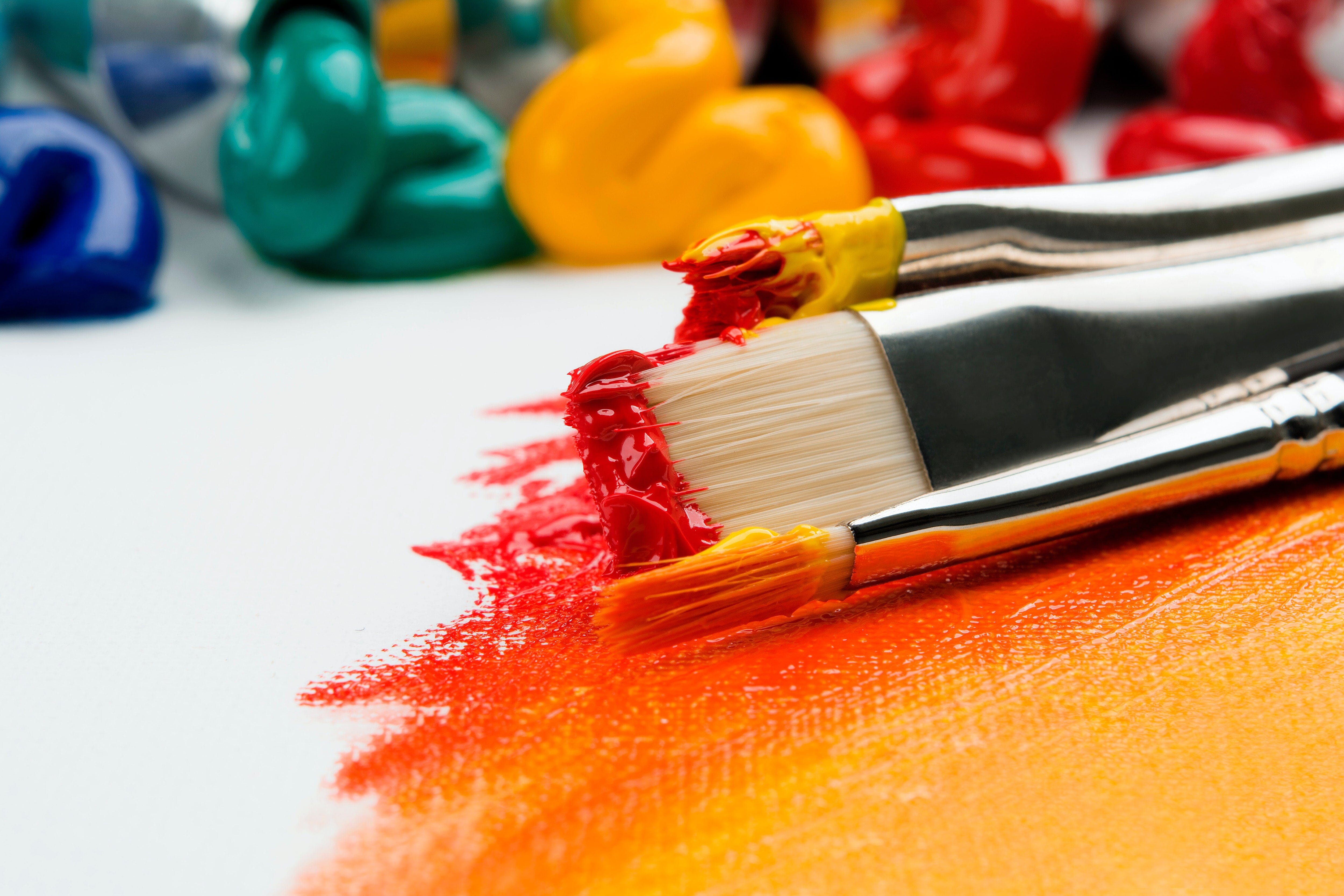Resin has become very popular as an art medium recently with artists finding all kinds of creative uses for it. For those who may not know, resin (in this case) is referring to a two-part epoxy that dries to form a rigid durable plastic. Once dry it is heat resistant and rock hard. One question we get a lot here is how to colour or tint it. Tinted resin can be used for a variety of reasons: as a top coat to art, as solid objects for jewelry & crafts, and as coloured bits to any number off multi media art pieces.
There are dyes specifically made to tint resin available from several companies; Castin'Craft and Alumilite are two brands offering such products but these dyes are available only through direct online suppliers. We wanted to test and see if some more easily accessible products that artists may already have in their studios could be used to successfully colour resin. The key feature is they should not be water based... but then we decided to try some of those anyways, just to see what would happen.
 We used Alumilite's Amazing Clear cast resin to test our colorants as some artist may want anything from translucent to opaque colour depending on their need.
We used Alumilite's Amazing Clear cast resin to test our colorants as some artist may want anything from translucent to opaque colour depending on their need.
We tested the following items:
- Golden High Flow acrylic ink
- Golden Fluid acrylic (Interference)
- Daler Rowney acrylic ink
- Jacquard Pinata alcohol ink
- Jacquard Procion powdered dye (with & without water)
- Fine glitter
- DecoArt Glass Stain
Each sample was about 5ml and poured over wooden tags to a 1mm thickness. To test the opacity we have placed an image underneath. All samples were left to cure over the weekend in a relatively temperature controlled room in a covered box (to ward off dust).
To increase or decrease the transparency it was very easy to add the colouring a drop at a time or 1/8th tsp at a time.
Acrylic


Results: The acrylic inks mixed well & cured solid but some air bubbles remained; whether this is from the porous surface of the wood or the ink is uncertain. The samples here have 4 drops colour to 5ml resin. One note: the Daler Rowney sample did dry hard but not rock solid. An indent can be made if you dig a fingernail in with force. That would be a concern if using it for jewelry or a solid object.
The Interference fluid did cure normally but just failed to be colourful. Other colours of fluid acrylic would cure but perhaps remain impressionable. See last section.
Alcohol Ink
The alcohol inks work great but there can be a subtle or drastic shift in colour so test a small sample beforehand. You will notice any change immediately.

Fabric Dye
The Procion fabric dye remained the colour of it's powder when added as a powder. As you can see it stayed dark and gritty. We then added a drop or two of water to the 1/8th tsp of powder, mixed, and added that to the resin. Results in colour were amazing and cured no problem. Something I noticed as the resin cured; air bubbles from the Procion samples released rapidly and thoroughly leaving a beautifully smooth finish.


Glass Stain
The glass stain worked well for a light tint of colour but shifted dramatically when more of it was added, becoming cloudy. This could be fine depending on whether transparent or opaque resin is desired, but the change happened quickly. The sample cured with a slightly delicate surface (an indent could be left from a hard press of a fingernail).

Glitter
 This worked very easily and was a great addition to other mixes as well. No effect on curing or final product. Only draw back, unless you work in a laboratory level of cleanliness your going to be finding glitter on you for the rest of your life.
This worked very easily and was a great addition to other mixes as well. No effect on curing or final product. Only draw back, unless you work in a laboratory level of cleanliness your going to be finding glitter on you for the rest of your life.
Experiments
 We wanted to see how applying colour underneath, inside and on top of the resin varied.We have done a sample to illustrate. The sample with the ink in the resin was the lightest in colour but all methods worked beautifully.
We wanted to see how applying colour underneath, inside and on top of the resin varied.We have done a sample to illustrate. The sample with the ink in the resin was the lightest in colour but all methods worked beautifully.
 I was curious to see if the various samples with different substances added for colour could mix together with no ill effect.
I was curious to see if the various samples with different substances added for colour could mix together with no ill effect.
Taking the leftover drips of the remaining samples I poured them in a wooden container with the results pictured below. They all seemed fine together curing with no problem. This gave the opportunity to "paint" with the different colour created.

I encourage you to try samples and experiments of your own with resin as there are so many variables to account for that the best way to see if your idea will work is to try it in the miniature first. Hopefully this gives you a starting point and maybe some creative ideas!







